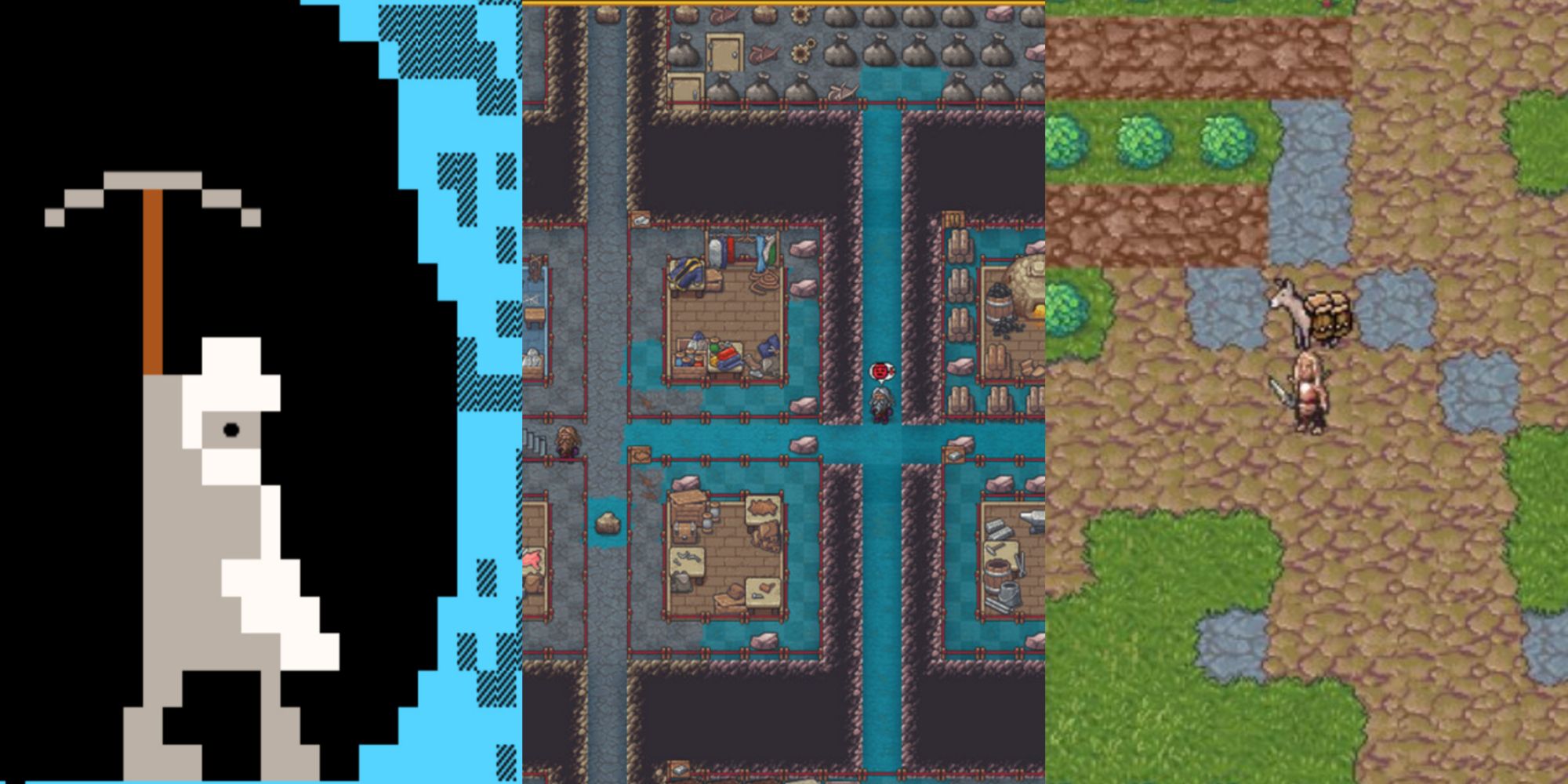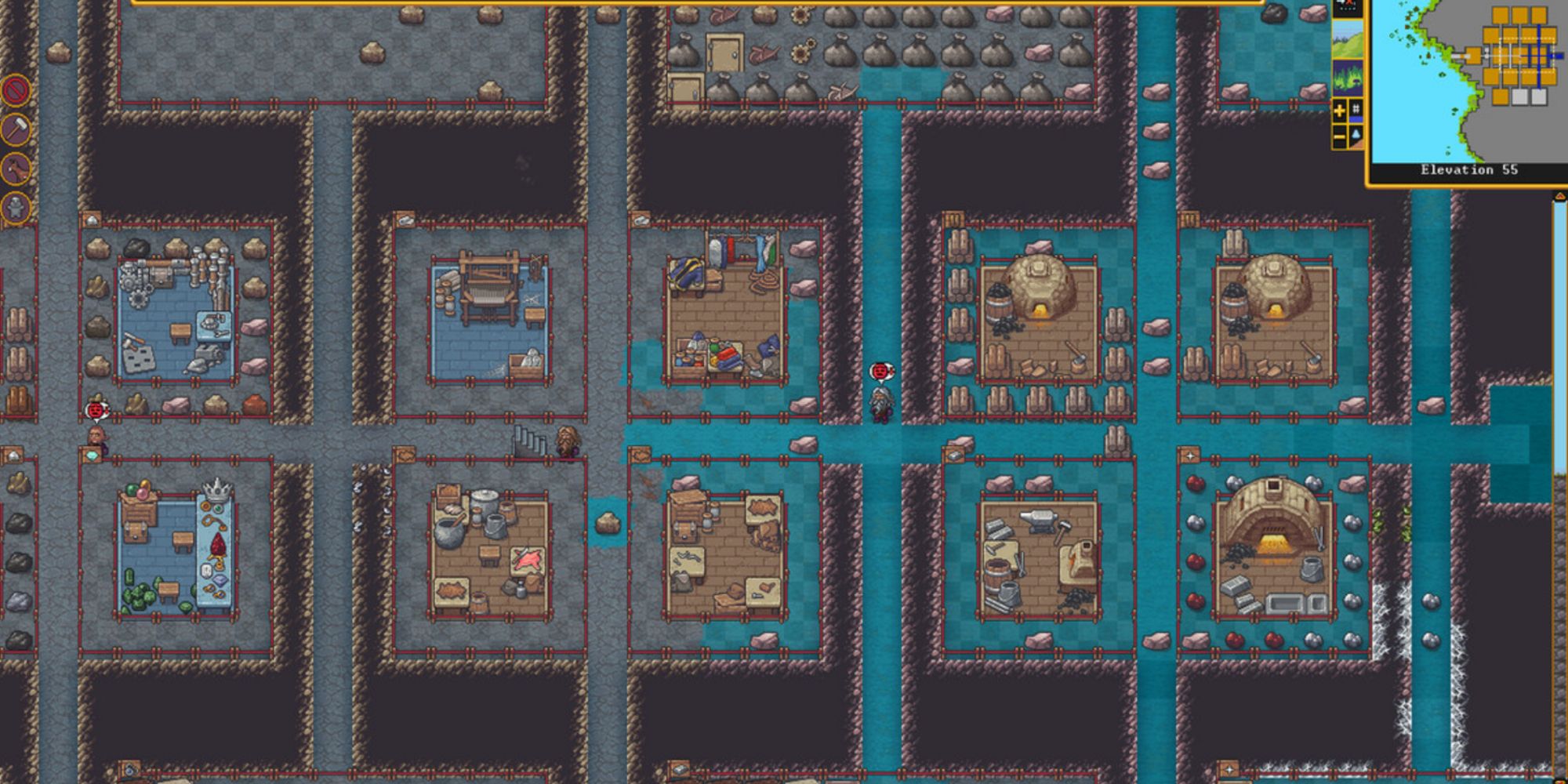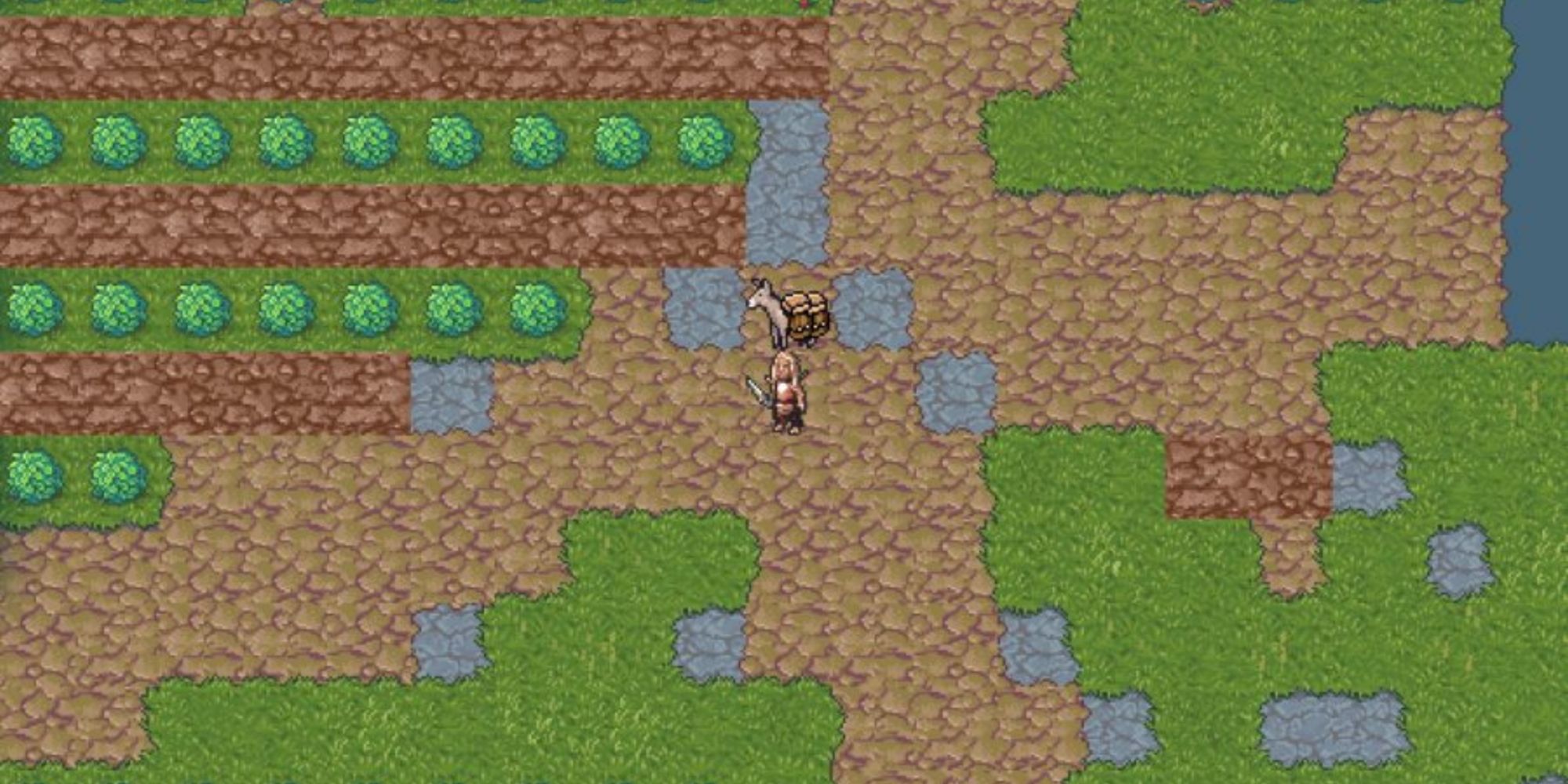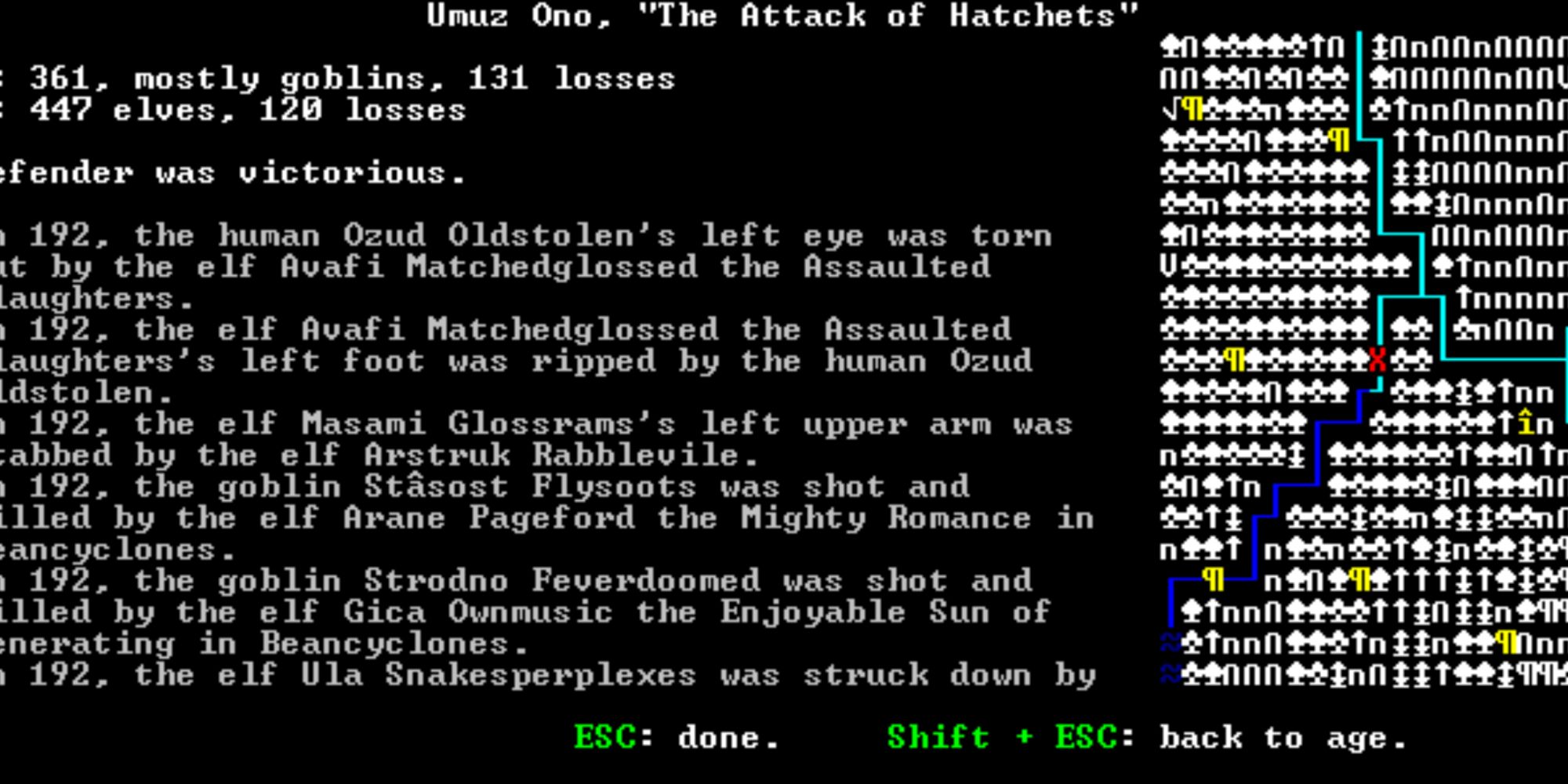Dwarf Fortress is a story generator, and although you may have heard about its colony management misadventures, there's actually two other modes to try. Adventure mode, which will see you taking control of a single created character. And Legend mode, which puts in you the shoes of a dwarven historian, as you comb through the entire history of the world.
Naturally, each mode appeals to a certain type of playstyle. They are all fundamentally different from each other, so understanding what you’re getting into is important. Will you raise a mighty fortress, or will you discover its legacy instead? One thing is certain, Dwarf fortress has enough content to keep you entertained for many hours.
3 Fortress Mode
Fortress mode is the titular Dwarf Fortress experience. You are placed in charge of seven dwarves to start, and you settle in a location of your choosing. From there, the choice is yours whether they taste the riches of success, or meet an unfortunate end. Your initial dwarves have a choice of provisions, equipment and skills that will best suit your new colony. You may be in charge in the grand scheme of things, but the catch is that you are unable to control dwarves individually.
Each dwarf has their own motivations, needs and desires. They will eat when they feel like it, sleep when they are tired, and follow their assigned work schedule to the best of their abilities. If a young dwarf lad decides to go on a nature walk when a raging minotaur roams outside your walls, then natural selection will take precedence over your own control. That being said, it’s not like you are completely at the whims of your stout inhabitants.
Dwarves have needs, both essential and vain. Providing for all these needs will help your colony function smoothly. You will be in charge of work assignments, building and scheduling, so designing an effective fortress is ultimately up to you. Since you can’t directly control dwarves, risk management is also an important part of your role. Taking the most appropriate steps towards providing a safe and happy environment will reflect on the well-being of your fortress. The world is fully simulated, and creatures or civilizations will react to your fortress based on your actions. For example, cut down too many trees and the elves will have something to say about it.
2 Adventurer Mode
Adventurer mode is the opposite of Fortress mode. Instead of guiding the reins of an entire fortress of dwarves, you are placed in direct control of just one character (or a few if you make a party). This character is created by you, and can pick from any playable race be it elf, goblin or something in between.
After choosing a race, you will determine how renowned your character is. Are they a pathetic peasant who is hardly scraping by? Or are they a demigod who shakes the world around them? Each starting status comes with a different set of allocatable attributes, skill points and equipment points. These points are distributed at your leisure, and perform a role similar to a traditional level-based RPG. Aside from typical body attributes like strength and agility, there are also soul attributes. These are more cerebral, and affect things like musicality or focus.
After your character is created, you are free to fully explore the procedurally generated open world that you’ve created. Your character can encounter anything from dark caves, ferocious monsters to bustling towns. What’s even cooler is that you can even visit any previously held fortresses in the world, and take any items that you may have created there. It shows just how interconnected the worlds of Dwarf Fortress are. Adventurer mode is best seen as an open-world RPG, mixed with a complex layer of simulation and Dwarf Fortress flair.
1 Legends Mode
Legends mode really lets you hit the books like a historian. It fully showcases the world building that Dwarf Fortresses world generation is capable of. Instead of managing dwarves, this mode is about discovering all the historical events and details that go into their world. When starting a new game in Legends mode, you will follow the same steps of world generation as the other modes. However, everything after this point is different.
You take on an omniscient role in the world, and can view everything that there is to learn. You can read interesting logs about a historical figure in world history, or you can learn about the rise and fall of civilizations. Each of these logs are incredibly detailed, and prone to taking you down a rabbit hole of curiosity. You may start your legends journey reading about a particular civilization, and end it by learning the story of a single goblin who lived there.
This game mode takes the story generating capabilities of Dwarf Fortress, and pushes them as far as possible. It can be surprisingly entertaining to read tales of elves battling demons, goblins having wrestling competitions and dwarves raising the undead to their own peril. Given the procedurally generated nature of the world, some of the stories can feel slightly mismatched. However, if you take everything at face value, it actually makes the stories even funnier and fits into the wild antics Dwarf Fortress is known for.




